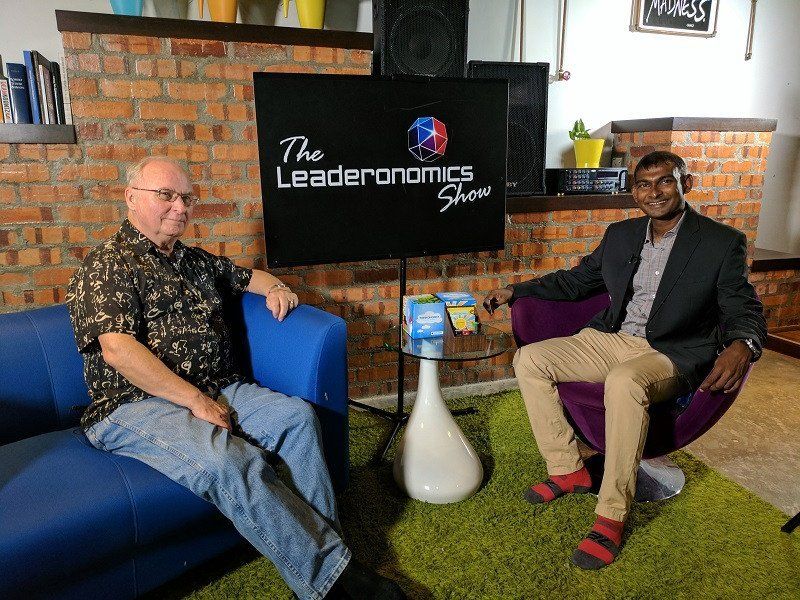Do You Have A Clear Case For Change?

What’s your crisis?
roshan.thiran@leaderonomics.com
In 2014, our team the Leaderonomics Football Club (Leaderonomics FC) played in the top division in the Garden League (GSL) and won the Division 1 title and the Cup double.
Fast forward to March 2015 and after the first four games this year, our team was sitting second from bottom in the league standings.
Even after our first game, which we narrowly and luckily won, there were signs that this year was going to be a tough year. Every team works hard to beat the champions and we were no exception to the norm.
However, after every defeat, our team would gather together and make a commitment to play hard, correct our mistakes and be more focused. Yet, each week passed and we tasted defeat after defeat.
In spite of the calls and desire to change, we never deviated from the style or performance levels we were putting in.
After our second defeat in a row, there was in-fighting and issues started to crop up. We finally decided we needed to give our younger and less experienced players a run.
Many of them started the next game, yet we lost again – our third loss in a row. As we approached rock bottom, we knew a crisis was looming. And what better way to galvanise the troops than with a crisis.
This mini crisis became the basis for our “change”. Like Manchester United was when David Moyes took over, we were becoming the “laughing boys” of the league.
The players rallied together and we made a commitment to work together, younger boys and the more senior heads, to take the team forward.
The result – fast forward to last weekend and our team beat the team at the top of the table for the majority of the season, the FFK Football Club, to pip them to win the league title for the second year running, with a game to spare.
Change is hard
Ask anyone and they will readily claim that they love change. Most people like to believe that they are flexible and adaptable and will not have issues with change. Yet, we hate change.
Why? Because change is painful. And we are hard-wired to avoid pain.
The primary function of our brain is survival. In order to survive, all forms of pain are deemed dangerous.
So, when we feel pain from change, our body signals the pain to the brain and there is an immediate command to “stop” the change.
So, when your organisation commands your employees to change, most employees will nod their head in agreement, yet when the change begins, they revert to their old selves.
When questioned why they refuse to change, they automatically provide answers from it was “not so user-friendly” to “we did it before but it didn’t work” to “it’s bound to fail so we decided to revert back to our old ways”.
The case for change
In this tough era, when many CEOs (chief executive officers) try to drive various change initiatives including cost optimisation, growth initiatives and driving efficiencies, they have a hard time convincing employees to change accordingly.
Most employees prefer status quo and unless there is a clear case for change (i.e. a crisis that may jeopardise their way of living or their future), there is no desire to deviate from the current practices today.
Niccolo Machiavelli correctly stated:
“There is nothing more difficult to carry out, nor more doubtful of success, nor more dangerous to handle, than to initiate a new order of things.”
So where do we start if we want to drive change?
The starting point
The starting point of change has to be in creating a sense of urgency and despair. All successful organisational change efforts begins by getting this “urgency” creation right.
Companies that dive into change plans without clearly establishing this “crisis” or “urgency” set themselves up for failure. Why is this critical?
People can only be moved to commit to your change if both their hearts and minds are aligned to this change. Many times, our case for change are presentation slides showcasing how the company can be better off if we change.
Why should employees even bother to change for your organisation? They want a personal benefit from the change and will ask “what’s in it for me?” to change.
Even if you manage to provide details and analysis that will prove beyond a doubt that the change needs to be embraced, people may still resist the change.
Having won over the “mind” of a person with well-supported and articulated facts will help address the “head” equation but fails to take into account the “heart” part of the equation.
This is where a crisis or a sense of urgency comes in. It helps create an emotional appeal to the change that connects to the heart.
How do you create an urgency for change?
There is a saying that goes, “when the pain of change is less than the pain you’re in, you will change.”
For you to successfully create a sense of urgency, you need to illustrate and clearly demonstrate that the pain currently being faced is much more than the pain of change. If you succeed in doing this, half your battle is won.
The best change leaders tell stories coupled with rich anecdotes of both organisations and individuals that failed to change and the resulting catastrophes and the stories of those that changed and the incredible future that resulted from that change.
Helping your employees see that brighter future helps them overcome the pain of change.
What’s your crisis?
When Datuk Seri Idris Jala took over as CEO of MAS many years ago, he created a crisis of sorts to galvanise the employees to change. He succeeded where many others had failed before him (and after him).
Most companies that fail only change when there is an actual crisis. In such times, not only do you have to deal with the crisis and the sinking ship, it is hard to drive change in the midst of survival.
The best time to change is before the storm hits. Yet, there is no motivation to change unless we see the storm.
That’s why great leaders are able to clearly see and articulate the future. If there is no change, the result is status quo and if there is change, endless beautiful prospects will entail. Enabling employees to see the crisis before it even happens helps them rally around the change.
Concluding thoughts and introducing…
It is not the easiest thing to do, but not impossible. My colleague Joseph Tan, specialises in helping organisations clearly see their current state and then draw out their future state.
By doing this, he helps them clearly understand and articulate the impending crisis which sets the stage for change. So, if you are planning on driving change and don’t have a crisis or a sense of urgency, you just may not succeed.
Post-script

Congratulations to the Leaderonomics FC team for overcoming the odds and winning the GSL Division 1 title for the second season in a row! Hard work, persistence and grit compounded with constantly learning and growing were keys to the success of the team this year. To follow the Leaderonomics FC team, go to www.leaderonomics.org.
Roshan Thiran is CEO of Leaderonomics, a social enterprise passionate about transforming the nation through leadership development. Leaderonomics recently set up a culture consulting arm headed by Malaysia’s culture guru, Joseph Tan. To learn more about the works of Leaderonomics Good Monday, email training@leaderonomics.com. To connect with Roshan, go to www.facebook.com/roshanthiran.leaderonomics. For more Be A Leader articles, click here.
Leadership
Roshan is the Founder and “Kuli” of the Leaderonomics Group of companies. He believes that everyone can be a leader and "make a dent in the universe," in their own special ways. He is featured on TV, radio and numerous publications sharing the Science of Building Leaders and on leadership development. Follow him at www.roshanthiran.com






